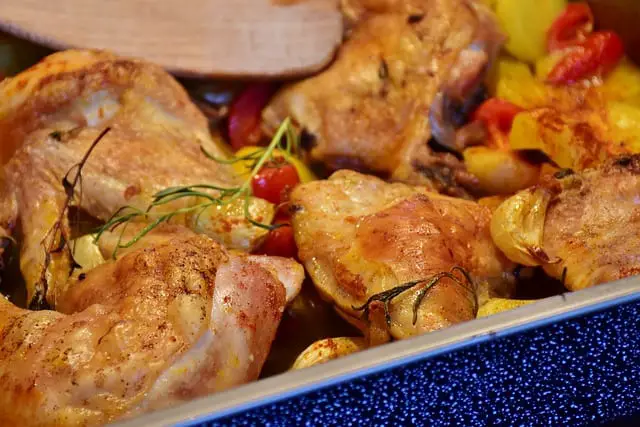Spices are the heart and soul of many dishes, and they come in a diverse array of flavors, adding depth, aroma, and character to our culinary creations. One interesting way to categorize spices is by whether they are primarily used in sweet or savory dishes.
Popular Sweet Spices: Cinnamon, Nutmeg, Allspice, Cardamom
Popular Savory Spices: Cumin, Paprika, Coriander, Thyme
In this blog post, we’ll delve into the world of sweet spices and savory spices, exploring their distinct flavor profiles and culinary applications, and show you how to use them together in your dishes.
Sweet Spices
Sweet spices are the aromatic wonders that infuse desserts, pastries, and sweet treats with warmth, sweetness, and complexity. They are often associated with cozy feelings and holiday aromas. Let’s take a closer look at some popular sweet spices:
Cinnamon
- Flavor Profile: Warm, sweet, and slightly spicy with hints of earthiness.
- Culinary Applications: Cinnamon is a star in desserts like cinnamon rolls, apple pie, and rice pudding. It also adds depth to hot beverages like chai tea and mulled wine.
Nutmeg
- Flavor Profile: Warm, nutty, and slightly sweet with a hint of spice.
- Culinary Applications: Nutmeg is a key player in dishes like pumpkin pie, eggnog, and creamy pasta sauces. It elevates the flavor of custards and gratin dishes.
Allspice
- Flavor Profile: A blend of cinnamon, clove, and nutmeg with a hint of pepper.
- Culinary Applications: Allspice is often used in spice cakes, gingerbread, and fruit compotes. It’s also a key ingredient in jerk seasoning for savory dishes.
Cardamom
- Flavor Profile: Citrusy, sweet, and slightly floral with a hint of spice.
- Culinary Applications: Cardamom is used in Scandinavian pastries, Indian desserts, and spiced coffee. It can also enhance the flavor of rice and meat dishes.
Savory Spices
Savory spices are the workhorses of the kitchen, elevating savory dishes to new heights with their robust and sometimes pungent flavors. They are essential for adding depth and complexity to savory meals. Here are some popular savory spices:
Cumin
- Flavor Profile: Earthy, nutty, and slightly smoky with a hint of citrus.
- Culinary Applications: Cumin is a staple in Mexican and Indian cuisines, used in dishes like tacos, chili, curries, and hummus.
Paprika
- Flavor Profile: Mildly sweet with varying degrees of smokiness and heat.
- Culinary Applications: Paprika adds color and flavor to dishes like goulash, paella, and deviled eggs. It’s also a key ingredient in many rubs and marinades.
Coriander
- Flavor Profile: Citrusy, slightly sweet, and earthy with a hint of spice.
- Culinary Applications: Coriander is used in various international cuisines, from Indian curries to Moroccan tagines. It’s also found in pickling spice blends.
Thyme
- Flavor Profile: Earthy, woody, and slightly minty with a hint of lemon.
- Culinary Applications: Thyme is a versatile herb that pairs well with roasted meats, stews, soups, and roasted vegetables.

Sweet vs. Savory Spices: A Comparison
| Aspect | Sweet Spices | Savory Spices |
|---|---|---|
| Flavor Profile | Warm, sweet, and slightly spicy | Earthy, nutty, and sometimes pungent |
| Popular Examples | Cinnamon, Nutmeg, Allspice, Cardamom | Cumin, Paprika, Coriander, Thyme |
| Culinary Applications | Desserts, pastries, hot beverages | Savory dishes, rubs, marinades |
| Dishes Incorporating | Cinnamon rolls, apple pie, chai tea, Pumpkin pie, eggnog, spice cakes | Tacos, chili, goulash, roasted meats, Curries, hummus, paella, tagines |
| Other Factors of Interest | Sweet spices often pair well with dairy products like milk and cream. They can also add warmth to beverages and balance the richness of sweet dishes. | Savory spices are essential for building the foundation of many cuisines. They can be used to create depth in soups, stews, and braised dishes. Additionally, they add color and flavor to savory snacks like popcorn or roasted nuts. |
Dishes That Incorporate Both Sweet and Savory Spices
- Moroccan Tagine: This dish combines savory spices like cumin and coriander with sweet elements like dried fruits and cinnamon, resulting in a harmonious blend of flavors.
- Chai-Spiced Chicken: Marinated in a mixture of cardamom, cinnamon, and cloves, this chicken dish balances sweet and savory spices, offering a delightful fusion of tastes.
- Spiced Rice Pilaf: Aromatic basmati rice is cooked with savory spices like cumin and coriander, then subtly sweetened with raisins or dried apricots for complexity.
- Mexican Chocolate Mole: This rich, savory sauce features ancho chilies, cumin, and cinnamon, creating a complex flavor profile with a hint of sweetness.
- Cinnamon-Spiced Lamb Chops: These savory lamb chops are elevated with a touch of cinnamon, adding a warm and sweet dimension to the dish.
Final Thoughts
In the culinary world, the distinction between sweet and savory spices is essential for creating well-balanced and flavorful dishes. Whether you’re preparing a cozy dessert or a savory feast, understanding the unique characteristics of these spices will help you craft delicious and memorable meals that cater to your taste buds’ desires.
So, next time you step into the kitchen, consider the role of sweet and savory spices in your recipe, and let your creativity flourish.

